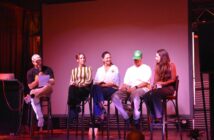Kiwis love a discount. So much, in fact, that Nielsen research shows that 59 percent of all sales in New Zealand come from products that are on promotion, giving the nation one of the highest levels globally. Comparatively, North America sits at only 31 percent. This in turn means that competing companies are constantly engaged in a discount war, vying against each other for the (bought) loyalty of consumers. And according to Nielsen’s executive director of marketing effectiveness Vicki Riggans, this culture is starting to impact the way Kiwis shop.
“Aggressive trade promotion strategies are driving an increased level of consumer promotional buying behaviours,” she says. “Shoppers simply wait for one of their repertoire of brands to be on promotion before purchasing a product.” So pervasive is the trend in the Kiwi context that Riggans believes that “price discounting is not an investment in this market but a cost of doing business.” And, when it comes to fuel discounting, that cost stretches into the millions, if not hundreds of millions of dollars.
While exact figures are guarded quite closely by the corporate machine in the New Zealand context, the costliness of fuel discounting was recently evident across the ditch where Coles and Woolworths were estimated to have spent $500 million on such promotions. Although most of this expense was carried by the Australian grocery chains, petrol stations also take significant hits to their profits when it comes to fuel discounting. And what seems like only a few cents to a consumer adds up and becomes a significant revenue leech to the business over the course of a year.
In an effort to reduce this loss of revenue, BP’s head office decided to cut the company’s AA Smartfuel discounts. But given the proclivity of Kiwis to shop on discount and the hyper competiveness this encourages between businesses in the same market, this move came with the risk of losing customers, who knew they could find a better deal elsewhere. At the outset, BP did have the benefit of a sound loyalty scheme on its side in the shape of AA Smartfuel. The programme had since its inception attracted significant interest from the Kiwi public (see case study page 46) and a huge portion of the Kiwi population was engaging with it on a weekly basis. The problem, however, was that AA Smarfuel was a coalition-based programme, meaning that BP was precluded from using its customer data to communicate directly with the consumers that would be affected by the discount cuts.
Given that this lack of a communication link increased the precariousness of what was already a risky move, BP set out to build its own database from scratch. But doing this was easier said than done; it was a project that required a substantial amount of groundwork and training, and one that had more than a few encumbrances along the way. For starters, the initiative required BP to work with two customer groups within its business to gain an accurate picture of customer behaviour: BP’s company-owned Connect sites as well as the range of independent dealer sites throughout the nation.
While the Connect sites were obligated to follow the decisions of the head office, BP had to gain indivual approval from each the 114 independent dealers to gain access to their transactional data. Given that a project of this gravity had never been attempted in the past, the independent dealers responded with trepidation on account of the complexity it would add to the point of sale at their stores. To convince the owners that it was a worthwhile risk, BP tapped into the salesman’s tradition and sent marketing reps across the country to sell the programme to each independent.

The effort paid off and they gave their consent to proceed. And while this was an important logistic hurdle for BP to overcome, it was only the start: the programme still needed to be installed and the staff at each store would inevitably require training on how to use the new software at the point of sale. During the three-month period that followed, BP worked with numerous global partners to set up secure data platforms for its external and internal stakeholders. Then, in an effort to ensure that each store was capable of collecting customer data from the launch, BP initiated a training programme with 4,000 staff members, educating them on the basics of the system, on how to capture the data at the point of sale and on how to manage the eDM and direct marketing offers. This step meant that as soon as the system was unveiled throughout the country, BP could immediately start accessing transactional data, which could be harnessed to monitor the habits of individual shoppers.
The only problem was that the database was still empty. So, in an effort to encourage consumers to join what would become the ‘Friends with Ongoing Benefits’ loyalty initiative, BP launched an online opt-in promotion called ‘Hit the Jackpot’, which consisted of a mobile-optimised casino-styled ‘spin and win’ webgame that rewarded customers with a guaranteed four cents per litre fuel discount as well as the chance to win bigger prizes. The initiative quickly gained momentum, and BP was able to accumulate a substantial customer database, giving the company access to information and insights that were previously unavailable. Before this information was available, the company’s global head office was of the opinion that AA Smartfuel shoppers—which form a huge chunk of the company’s customer base—were disloyal, low spending, female-skewed and infrequent visitors. And while anecdotal evidence had suggested that this was inaccurate, it wasn’t until BP analysed its customers’ transactional habits that it was able to debunk this assumption.

Through segmenting the AA Smartfuel shopper group, BP was able to find out which customers were loyal and what they were worth to the company on an annual basis. And even more importantly, it gave the company an indication of who to target with offers to keep them loyal, despite the decrease in its base fuel discount.

With its database in place, the next step was to target shopper buying behaviour and incentivise a shift to more profitable and loyal shopper segments. This approach was incorporated by communicating directly with targeted customers via a suite of eDMs and direct marketing communications, which outlined four BP-specific discounts: 1) ‘Thirsty Thursday’ offered a discount of eight cents per litre during certain weeks; 2) ‘Hungry & Thirsty’ gave customers 11 cents off per litre, if they spent $50 or more on fuel and $10 or more in-store; 3) ‘Food Deals’ gave customers a discount of four cents per litre, plus two cents off for each additional food deal purchased (up to 12 cents); and 4) ‘Variable Fuel’ deals, which offered customers up to ten cents off per litre, depending on how much they bought.

The eDM campaign proved particularly successful, resulting in open rates in excess of 40 percent and redemption rates of up 60 percent. And though some of these discounts exceeded AA Smartfuel’s base discount of six cents per litre, the independent loyalty system gave BP a range of advantages that would not have been attainable had it simply continued to rely on the Smartfuel programme. “Moving our loyalty offering from a discount card mechanic to one where we reward loyal and active BP customers, has allowed the business to better focus on customers of high value and improve profitability,” says BP’s chief financial officer Peter Knipping. “It’s about targeting spend to give measurable return.”
Prior to launching the loyalty scheme, BP was throwing away its transactional data and driving decisions based only on the limited information available at the time. The introduction of the system has given the company greater data granularity and now makes it possible to market to specific target segments. In doing so, BP is now able to customise its offers in a way that encourages shoppers to return to its petrol stations to take advantage of the deals. And in a market where brand loyalty is notoriously low, this level of engagement has become a key point of difference that separates BP from its competitors.
Although the system has already generated an impressive return on investment, BP has already consolidated it by accumulating an additional text database, which gives the company another channel through which to communicate its promotions directly to customers that have opted in. BP would not release any figures on account of commercial sensitivity, but the programme has already resulted in a significant return on investment, which has not only come from increased fuel sales but also from reduced discounting costs and shoppers purchasing more items in the on-site stores.
And while these impressive results undoubtedly stand as testament to the success the programme, the campaign wasn’t only about increasing the profits for the company. It was also about understanding what consumers want and ensuring that your marketing communications correlate with those insights. Given that BP has invested considerably in the continued development of this programme, it seems that its customers are likely to be treated with ongoing benefits for some time to come.




